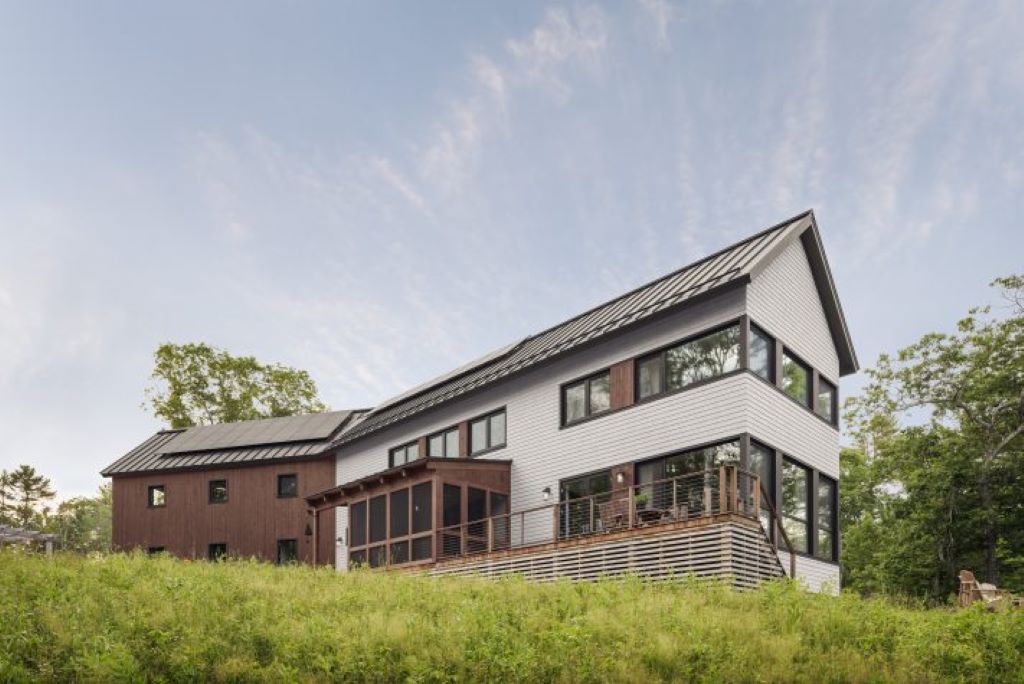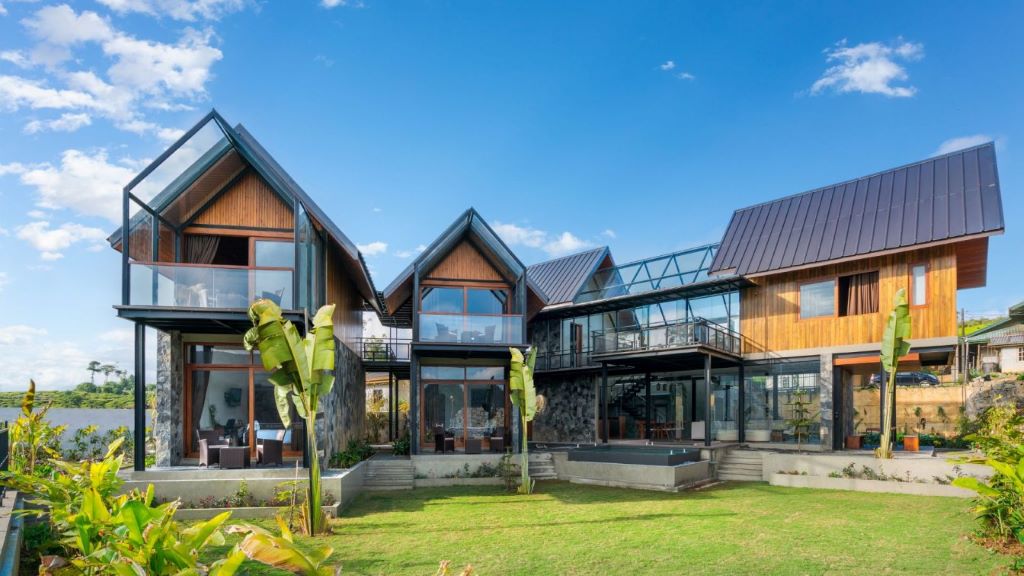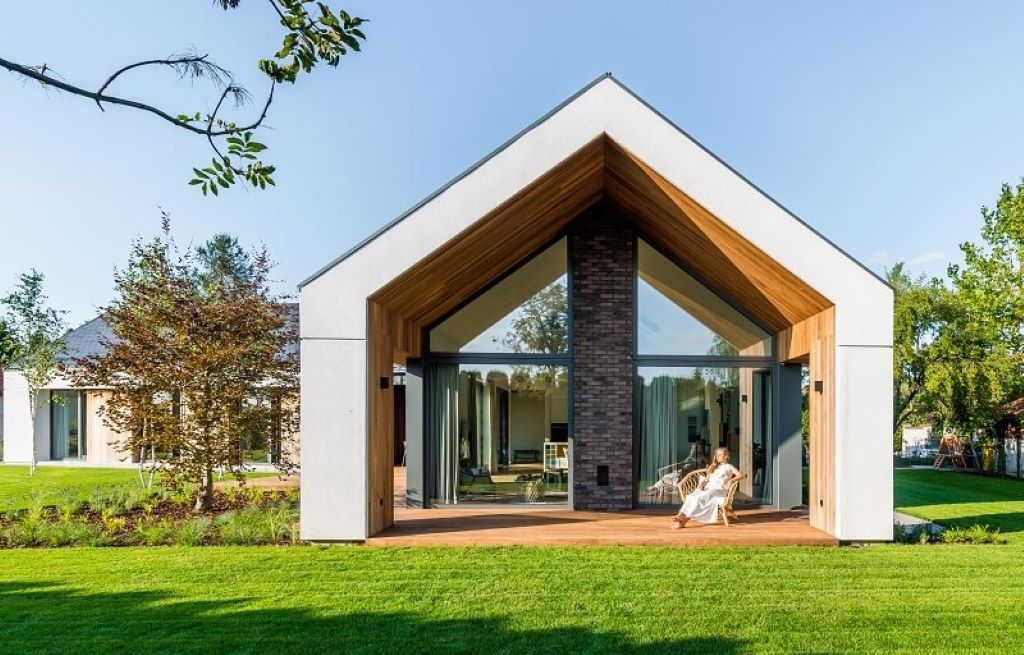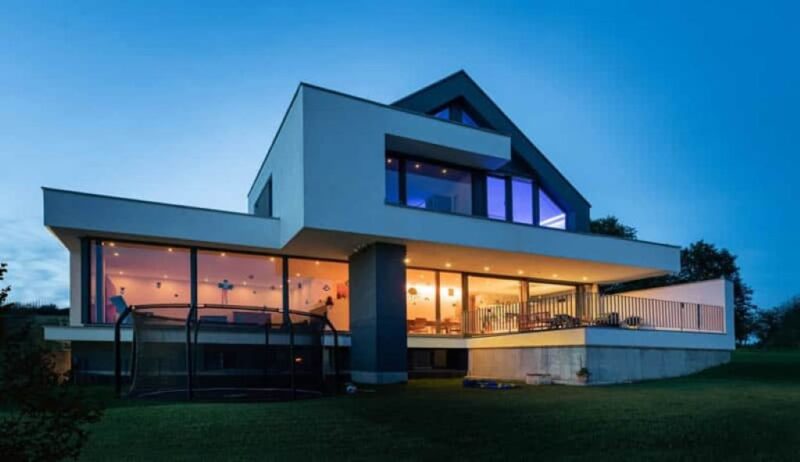Gable roofs are the future of modern architecture due to their cost-effectiveness and efficient water drainage capabilities. These roofs have become increasingly popular because they require less roofing material and allow rain and snow to easily slide off, reducing the risk of leaks and water damage.
Gable roofs also provide additional space for attics or vaulted ceilings and allow for better ventilation. Their simple design makes them easy to build and more affordable compared to other complex roof styles. In addition, gable roofs can be customized to fit any type of building and offer a sense of continuity between the roof and façade. Overall, gable roofs are the ideal choice for modern architectural designs.
The Advantages Of Gable Roofs

With their simple and cost-effective design, gable roofs are becoming the future of modern architecture. Their sloped design allows for excellent water drainage, reducing the risk of leaks and ensuring long-term functionality. Additionally, gable roofs provide more attic space and better ventilation, offering numerous advantages for homeowners.
The Advantages of Gable Roofs When it comes to modern architecture, gable roofs are gaining popularity for their practicality and aesthetic appeal. These roofs have many advantages that make them a smart choice for homeowners and designers alike. In this article, we will explore the advantages of gable roofs, focusing on three key areas: cost efficiency, effective drainage, and more space and ventilation.
1.1 Cost Efficiency
One of the main advantages of gable roofs is their cost efficiency. Unlike hip roofs that have four roof planes, gable roofs only have two. This means that you will likely spend much less money on roofing materials. Additionally, the simplicity of their design makes them easier and quicker to build, further reducing labor costs. So, if you are looking for an economical roofing option without compromising on style, gable roofs are the way to go.
1.2 Effective Drainage
Effective drainage is another advantage of gable roofs. The sloped design of these roofs allows rainwater and snow to slide off easily. This prevents any build-up of water that could lead to leaks, ensuring that your roof remains fully functional for a longer period. By eliminating the risk of water damage, gable roofs contribute to the longevity of your home, saving you from costly repairs in the future.
1.3 More Space And Ventilation
Gable roofs offer more space and ventilation compared to other roof designs. Their steep slopes provide ample attic or vaulted ceiling space, allowing for extra storage or even additional living areas. Moreover, the triangular shape of gable roofs promotes natural ventilation. As air flows upwards towards the peak of the roof, it can escape through gable vents or windows, creating a comfortable and well-ventilated environment inside your home. In conclusion, gable roofs have several advantages that make them the future of modern architecture. They are cost-efficient, promote effective drainage, and provide more space and ventilation. Whether you are building a new home or renovating an existing one, considering a gable roof design will not only enhance the functionality of your space but also add a stylish and timeless element to your home’s exterior.
Challenges And Considerations For Gable Roofs
Gable roofs have become increasingly popular in modern architecture due to their sleek design and numerous advantages. However, like any other roofing style, gable roofs come with their own set of challenges and considerations that need to be addressed. In this section, we will explore some of the key challenges that architects and homeowners may face when opting for gable roofs.
2.1 Susceptibility To High Winds
Gable roofs, with their steep slopes and triangular shape, are more susceptible to high winds compared to other roof designs. The large surface area and minimal support can cause uplift forces, putting additional stress on the roof structure. This makes it crucial to consider the location and weather conditions of the building site before opting for a gable roof.
2.2 Potential Water Damage
Although gable roofs are known for their excellent water drainage due to the sloped design, they can still be prone to water damage if not properly constructed or maintained. The point where the two roof planes meet, known as the gable end, is particularly vulnerable to leaks and water infiltration. Therefore, it is essential to ensure proper sealing and flashing to prevent any potential water damage.
2.3 Technical Requirements
Gable roofs may require additional technical considerations compared to other roof designs. The steep slopes and triangular structure may require specialized roofing materials, such as reinforced trusses and braces, to ensure structural stability. Furthermore, the larger span created by gable roofs may require additional support structures to bear the load. Architects and builders need to carefully assess these technical requirements to ensure a safe and durable gable roof.
Gable Roofs In Modern Architecture

Gable roofs have been a staple in architecture for centuries, and they continue to be a popular choice in modern design. Their timeless appeal, simple yet versatile design, sustainability, and adaptability to contemporary projects make them the future of modern architecture.
3.1 Embracing Simple And Versatile Designs
The beauty of gable roofs lies in their simplicity. With two sloping sides meeting at a central ridge, they offer a clean and symmetrical appearance that can complement a wide range of architectural styles. Whether it’s a traditional farmhouse or a sleek and modern home, gable roofs effortlessly blend in and enhance the overall aesthetic.
Gable roofs also provide versatility in terms of design options. Architects can play around with the roof pitch, adding variation and visual interest to the structure. Additionally, gable roofs can be easily combined with other roof styles, such as dormers or shed roofs, creating unique and captivating architectural compositions.
3.2 Sustainability And Future Trends
In today’s environmentally conscious world, sustainability is a key consideration in architecture. Gable roofs excel in this aspect as they offer several sustainable benefits. The sloped design allows for efficient water drainage, minimizing the risk of leaks and ensuring the longevity of the roof. This contributes to the overall durability and eco-friendliness of the structure.
Moreover, gable roofs provide ample space for solar panel installations, harnessing renewable energy and reducing reliance on non-renewable resources. As solar power becomes increasingly popular and affordable, integrating solar panels into gable roofs opens up possibilities for more sustainable and energy-efficient homes.
3.3 Reimagining Gable Roofs In Contemporary Projects

Contemporary architects are reimagining gable roofs in innovative ways, pushing the boundaries of traditional design. By combining gable roofs with modern materials such as glass and steel, they create striking visual contrasts and give the structures a sleek and sophisticated look.
Gable roofs can also be designed with larger overhangs, serving as shading devices to reduce heat gain and enhance energy efficiency. This feature, along with proper insulation and ventilation, ensures comfortable indoor temperatures year-round and reduces the reliance on mechanical cooling systems.
The adaptability of gable roofs in contemporary projects is further evidenced by their use in eco-friendly and sustainable architectural initiatives, such as green roofs and passive house designs. The simplicity of the gable roof design allows for easy integration of sustainable features, making them an ideal choice for environmentally conscious architects.
Frequently Asked Questions For Why Gable Roofs Are The Future Of Modern Architecture
Why Are Gable Roofs Important?
Gable roofs are important because they are less expensive than other roof designs. They allow for effective water drainage and are less prone to leaks. Gable roofs also provide more space for attic or vaulted ceilings and allow for better ventilation.
They are easy to build and fit well with any building design.
What Are The Benefits Of A Gable End Roof?
The benefits of a gable end roof include efficient water drainage, which reduces the risk of leaks and water damage. Gable roofs are also less expensive compared to hip roofs, making them a cost-effective option. Additionally, the simple design of gable roofs allows for more attic space and better ventilation.
What Are The Pros And Cons Of Gable Roof Design?
Gable roof design has several advantages. It is less expensive than hip roofs, provides more space for attics or vaulted ceilings, allows for better ventilation, and easily sheds water and snow. However, gable roofs can be problematic in high wind and hurricane-prone areas.
What Are The Advantages Of A Gable And Valley Roof?
Gable and valley roofs have advantages such as being less expensive than hip roofs, allowing for effective water drainage, and providing more space for attic or vaulted ceilings. Gable roofs are easy to build and maintain, while the sloped design of a valley roof ensures water and snow slide off easily, reducing the risk of leaks and water damage.
Conclusion
Gable roofs are undeniably the future of modern architecture. With their sleek and simple design, these roofs offer a range of benefits that make them highly desirable. The sloped design allows for efficient water drainage, preventing leaks and ensuring the roof remains functional for longer.
Additionally, gable roofs are cost-effective, easy to build, and provide ample space for attic or vaulted ceilings. Understanding the role of roofing professionals in home maintenance is crucial for preserving the longevity and aesthetic appeal of architectural choices like gable roofs, which seamlessly blend functionality with aesthetics in both residential and commercial buildings. Whether you’re embracing the future of design or ensuring the structural integrity of your property, skilled roofing professionals play a pivotal role in maintaining the beauty and functionality of gable roofs.

